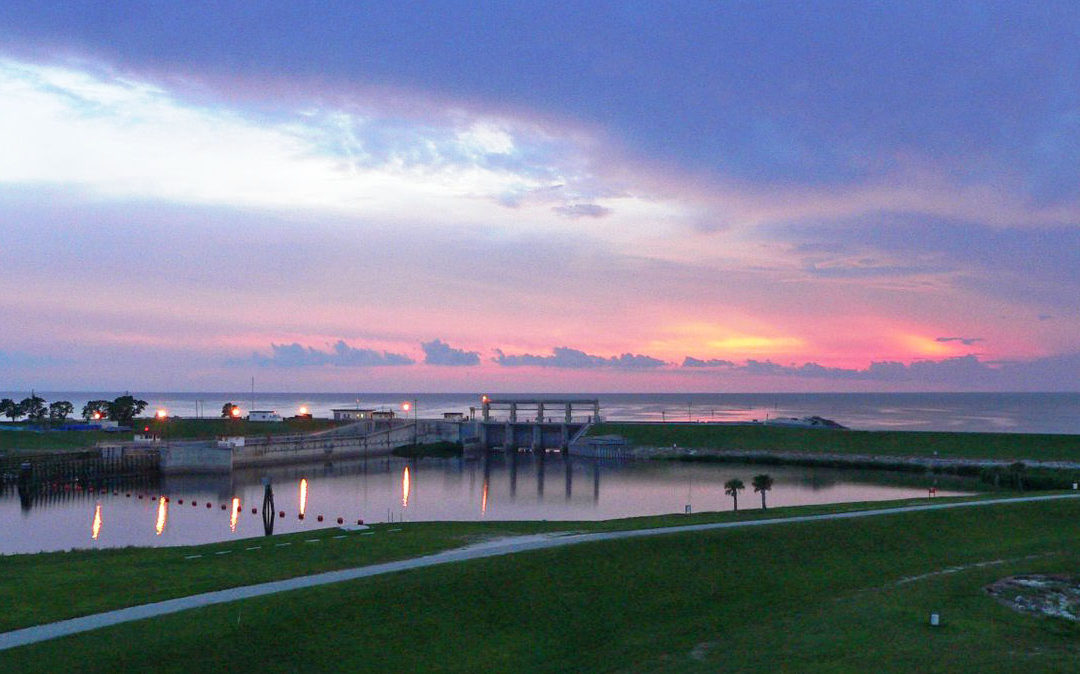After three long years, thousands of modeling runs and countless public input meetings, the Lake Okeechobee System Operating Manual (LOSOM) is nearing completion. And just as we thought the Army Corps was reaching a more equitable plan for most (not all) stakeholder interests, a new twist has been introduced in the eleventh hour.
At a recent Project Delivery Team (PDT) meeting, it was announced that the U.S. Army Corps of Engineers would defer to state water managers and South Florida Water Management District (SFWMD) when Lake Okeechobee levels are within 1.5 feet above the Water Shortage Management Line.
This raised many questions: Won’t this make all the modeling moot? Why is it just being added now? Who is really behind this request?
Leaders from Calusa Waterkeeper, Sanibel-Captiva Conservation Foundation, Friends of the Everglades, Florida Oceanographic Society, and Conservancy of Southwest Florida met to discuss this new development and send our concerns and comments to the Army Corps and Water Management District leadership.
This is a complex issue to understand, and if you’re interested in more details please scroll down to read some of our groups’ observations and concerns. Whether you have the time to read on or not, please consider supporting our joint ACTION ALERT: Ask the U.S. Army Corps of Engineers to reject this call for more state control and higher, damaging lake levels. Please use the button below provided by our collaborative partners to send a letter to Corps officials asking them to stop the LOSOM bait and switch!
Ask the ACOE to Stop this Bait and Switch
Further Observations from Calusa Waterkeeper
For all intents and purposes, this 1.5-foot buffer would create a new operational zone, and potentially a harmful, “water conservation mode.” In this context, water “conservation” should be interpreted as: More storage for industrial agricultural users.
What does this mean for the Lake Okeechobee system? — more water will be held in the lake than is necessary, which in turn could contribute to higher, ecologically damaging lake levels — and a greater chance of destructive, algae-laden discharges coming our way. Additionally, the lake ecology will undoubtedly suffer if “water conservation mode” hold more water in the lake than is necessary.
The scientific community is unaware of any science on which to base this last-minute control over to the state of Florida. We do support state input into operational decisions at all lake levels. However, “explicit reliance” on guidance by the state goes way too far.
Perhaps today’s leadership at the South Florida Water Management District (SFWMD) would strive to maintain dry-season environmental flows to the Caloosahatchee, but SFWMD leadership changes almost every election cycle. We should not allow politics to threaten the potential success of LOSOM and three long years of hard work.
Water use permits and renewals are largely at the discretion of the SFWMD Governing Board. Historically, the result has been to prioritize water supply demands over ecosystem needs, which has consistently led to significant harm to our estuaries and Lake Okeechobee. If the 1.5 foot buffer is adopted, the SFWMD would gain considerably more control which could lead to further over-allocation to consumptive users and potentially reverse some of the ecological benefits intended by LOSOM.
We need to demand that the U.S. Army Corp of Engineers does NOT cede control to the South Florida Water Management district when Lake Okeechobee levels are within 1.5 feet above the Water Shortage Management Line!
This is not the “balance” all involved have spent years seeking. And this last-minute attempt to create a new management zone is hardly fair to the majority of stakeholders. It sounds like a bait and switch to us.

























